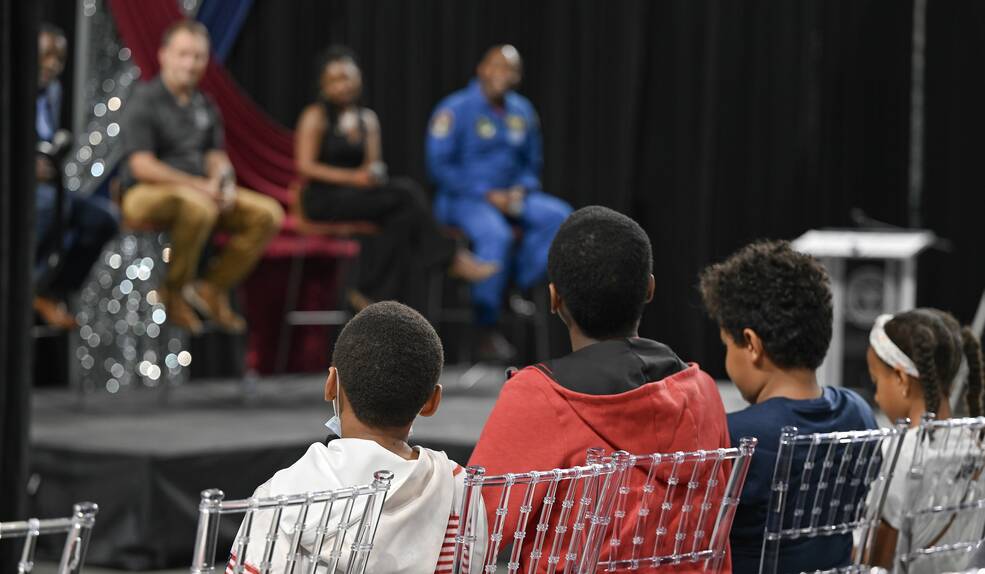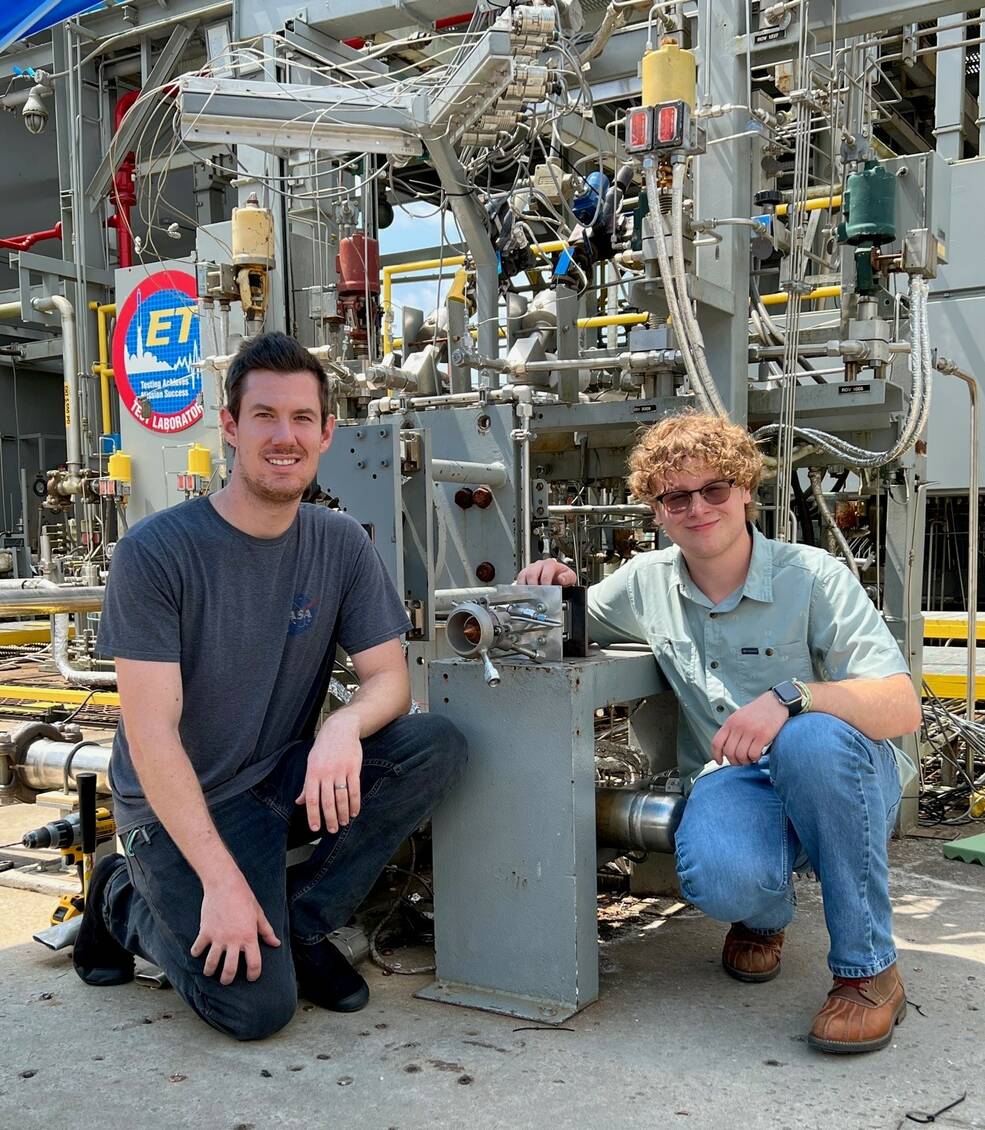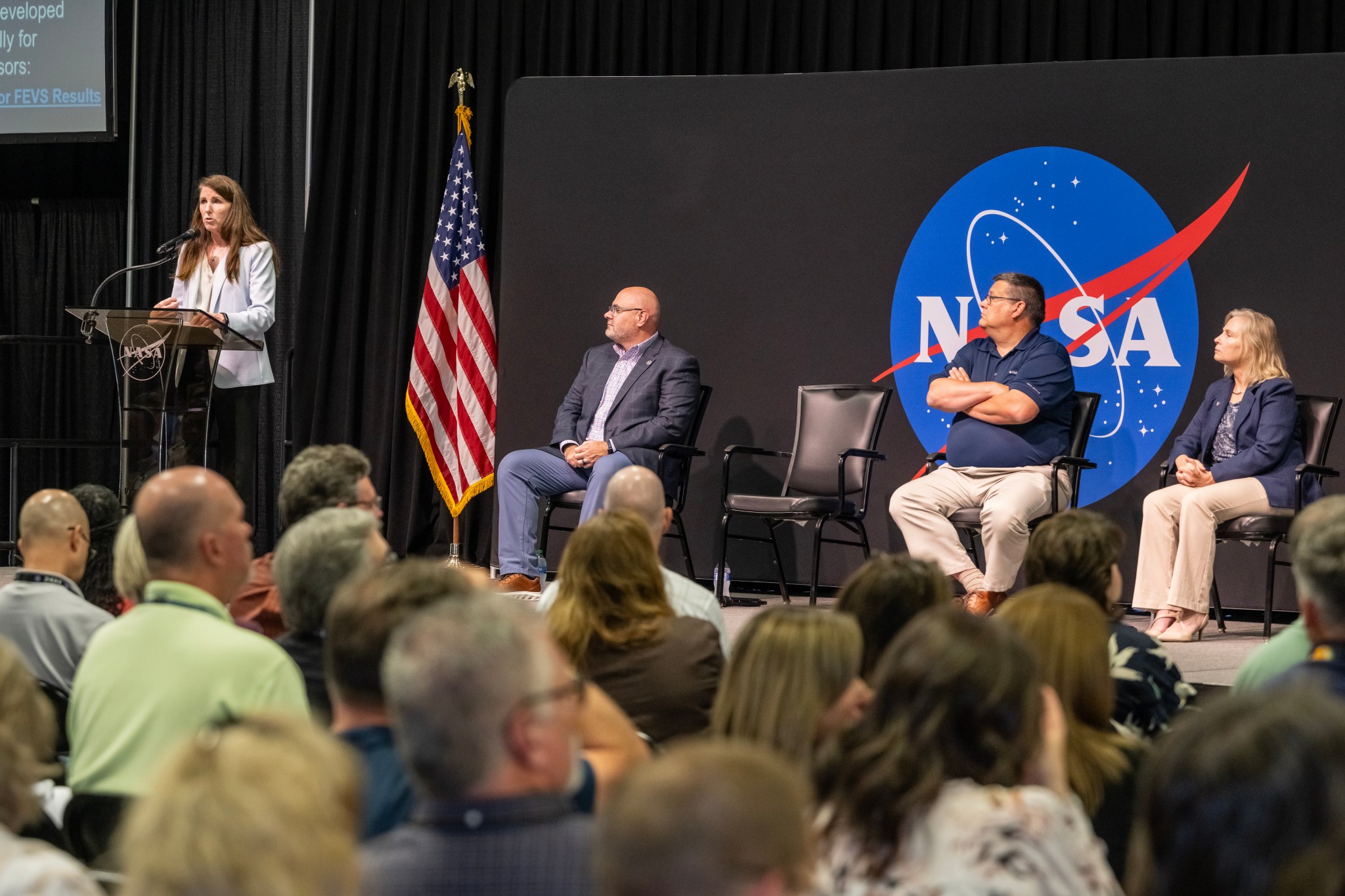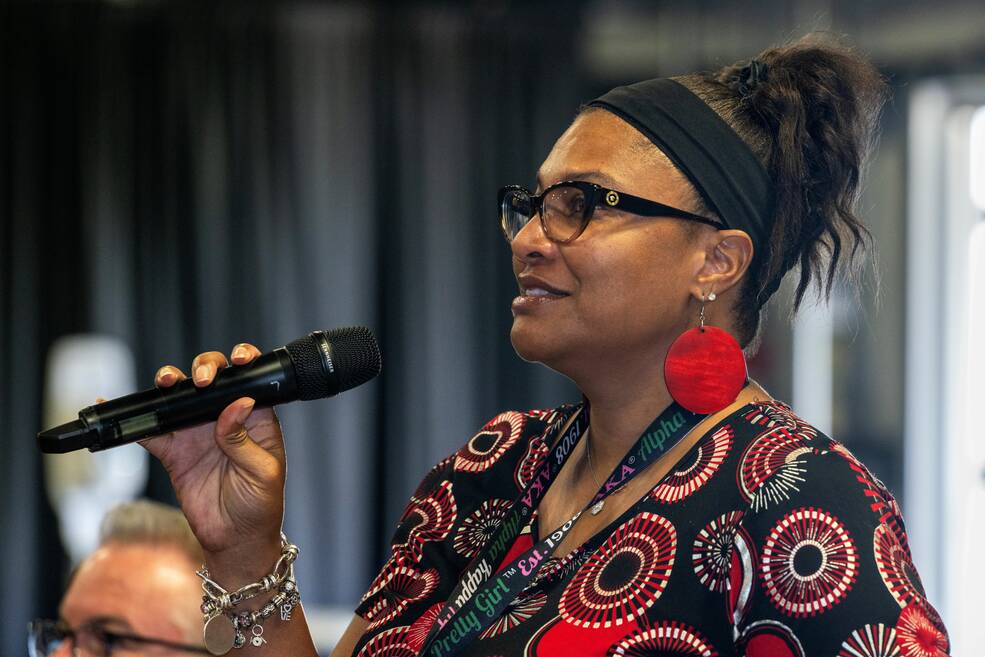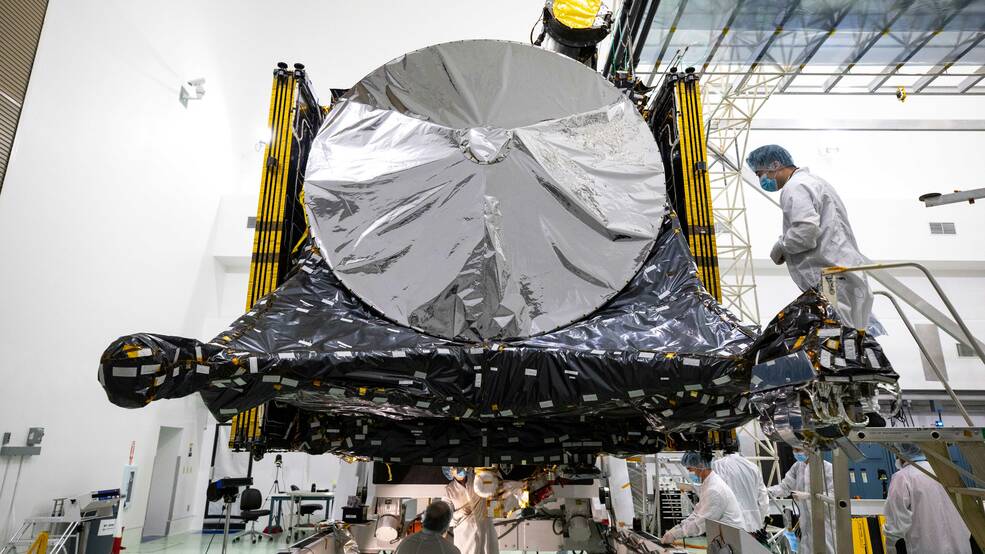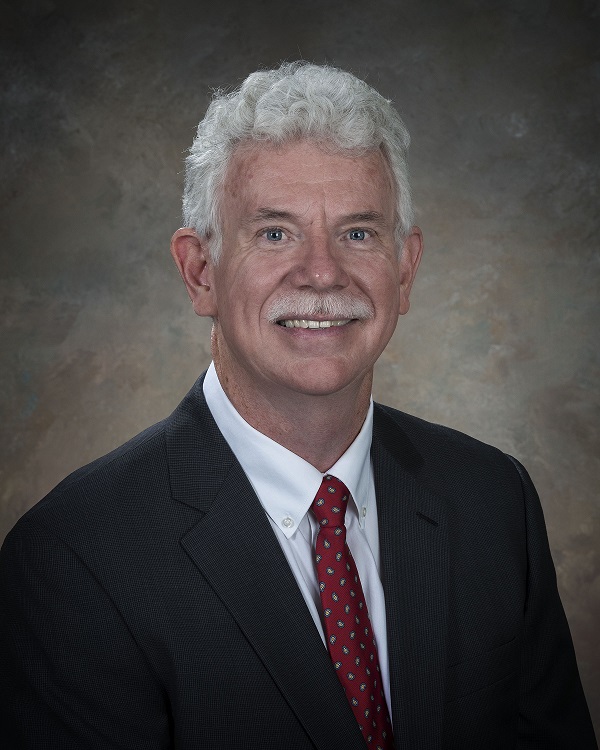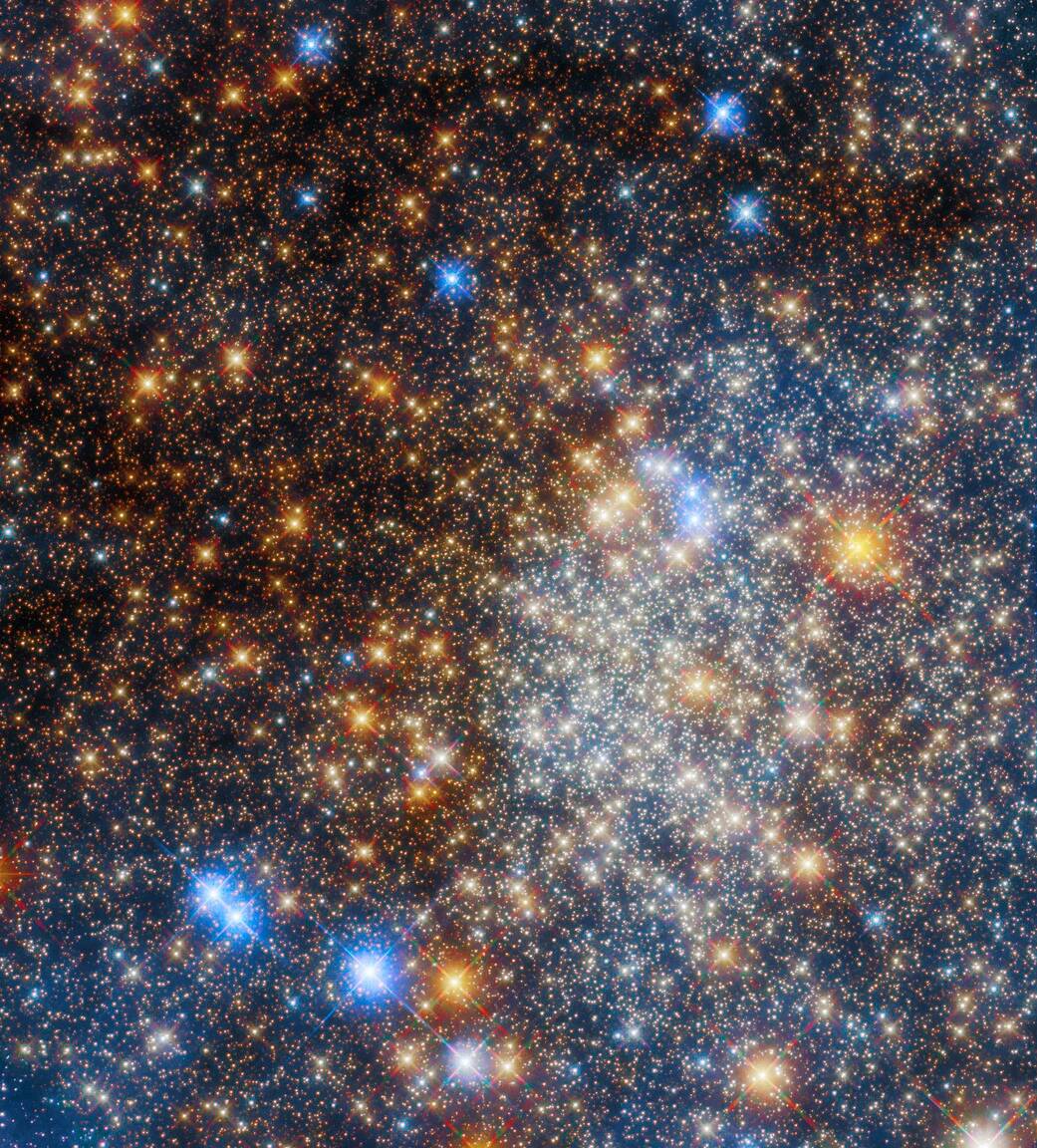In This Week’s Star
- Marshall-Managed Asteroid Delivery Mission Could Explain Origin of Life, Planets
- NASA Documentary Screening Shares Journey of Black Astronauts
- Intern Contributes ‘Sizably’ to Marshall’s Advanced Propulsion Project
- Supervisors’ All-Hands Focuses on Marshall Culture, Strategy
- NASA’s Psyche Mission on Track for Liftoff Next Month
- As We Welcome Fall, Take Time to Manage Stress
- Hubble Sees Glittering Globular Cluster Embedded Inside Milky Way
- Lucy Spacecraft Captures its First Images of Asteroid Dinkinesh
Marshall-Managed Asteroid Delivery Mission Could Explain Origin of Life, Planets
By Jessica Barnett
A sample return capsule scheduled to land in a Utah desert later this month will bring NASA one step closer to studying the earliest history of our solar system.
OSIRIS-REx (Origins, Spectral Interpretation, Resource Identification and Security – Regolith Explorer) is due to deliver the capsule Sept. 24 at the U.S. Department of Defense’s Utah Test and Training Range, about 80 miles southwest of Salt Lake City. It’s the third mission in NASA’s New Frontiers Program, which is managed at the agency’s Marshall Space Flight Center and aims to explore our solar system through medium-class robotic spacecraft missions.
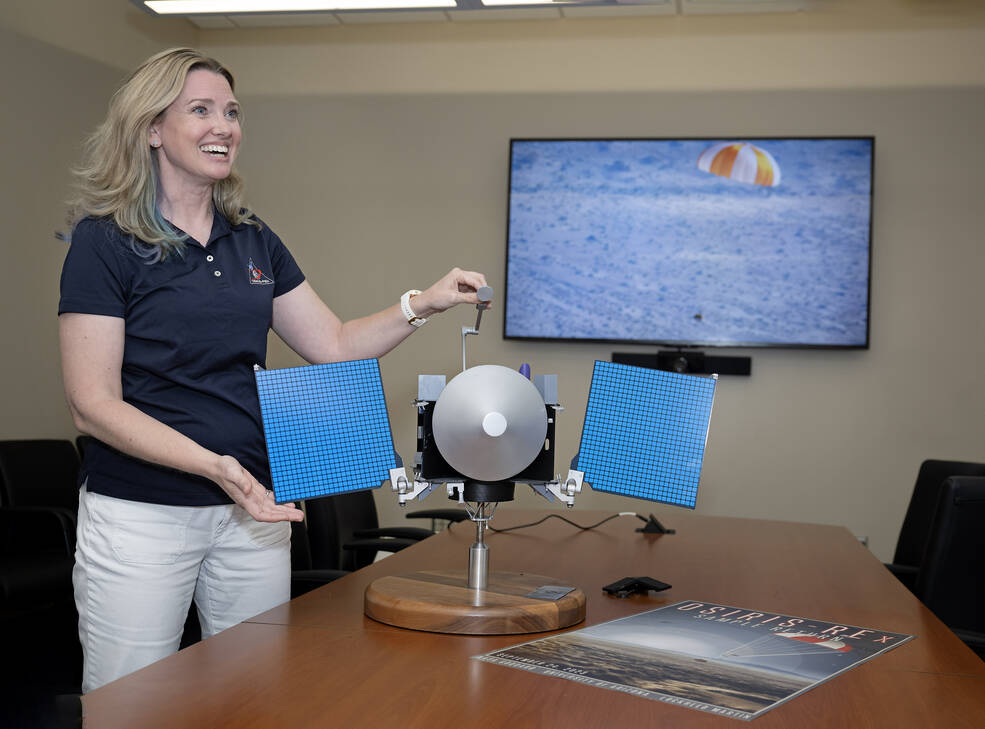
Solveig Irvine, who serves as mission manager for OSIRIS-REx at Marshall, said her team and others have been practicing and preparing for every step of the return process. The sample capsule being delivered by OSIRIS-REx contains regolith from Bennu, a carbonaceous asteroid that may contain the molecular precursors to the origin of life and the Earth’s oceans.
“We have a team that’s ready to bag the sample and take it to temporary clean room onsite, then it will be transferred to the curation team at Johnson Space Center,” Irvine said.
The curation team will preserve about 75% of the sample for future scientists to study, she explained. The remaining 25% will be studied by NASA’s current team of world-renowned scientists and its international partners.
OSIRIS-REx is the first U.S. spacecraft to rendezvous with, study, and return a pristine sample of an asteroid. This unprecedented look at Bennu will help NASA gather information for future robotic and human missions, including those with NASA’s Space Launch System to deep space destinations.
It will also allow NASA to determine Bennu’s physical and chemical properties, which will be critical to know in the event of an impact mitigation mission. Bennu is one of the most potentially hazardous asteroids, as it has a relatively high probability of impacting the Earth late in the 22nd century.
All of this makes Irvine’s job at Marshall that much more important. New Frontiers is part of NASA’s Science Mission Directorate in Washington. In Irvine’s role as OSIRIS-REx mission manager, she serves almost like a mission parent, making sure everyone has what they need when they need it.
“Mission managers are the interface between the project and NASA Headquarters, making sure they’re meeting their budget, technical, schedule and level 1 science goals,” Irvine explained. “There’s a lot of checkboxes, making sure NASA Headquarters knows what’s going on, all the documentation is ready, and that we’re prepared for anything that could happen, because that’s when we’re successful.”
Irvine said she’s proud to be part of a team that is helping to inspire the generations ahead.
“These missions help educate and excite not only today’s scientists, but the future ones,” she said. “They drive the curiosity and knowledge of the next generation as well as informing us now. If my being part of this mission helps any young person say, ‘Wow, I could do that’ or ‘I want to learn about that,’ then I feel good about my role at NASA.”
OSIRIS-REx arrived at Bennu in 2018, collected its sample in 2020, and has been on a path back to Earth since 2021. After it delivers the sample later this month, the spacecraft will move on to its next destination, Apophis, an S-type asteroid that will come within 20,000 miles of Earth in 2029.
Anyone traveling to Utah for OSIRIS-REx’s arrival is invited to check out the Sample Return Celebration at Clark Planetarium. From 10 a.m.–5 p.m. Sept. 21–23, the planetarium will host special presentations from NASA and other mission partners, fun asteroid-related activities, and even the U.S. Postal Service’s First Day of Issue OSIRIS-REx Stamp Dedication Ceremony.
NASA’s live coverage of the capsule landing will start at 9 a.m. Sept. 24 and air on NASA TV, the NASA app, and the agency’s website.
NASA’s Goddard Space Flight Center provides overall mission management, systems engineering, and the safety and mission assurance for OSIRIS-REx. Dante Lauretta of the University of Arizona, Tucson, is the principal investigator. The university leads the science team and the mission’s science observation planning and data processing. Lockheed Martin Space in Littleton, Colorado, built the spacecraft and provides flight operations. Goddard and KinetX Aerospace are responsible for navigating the OSIRIS-REx spacecraft.
View more information about the OSIRIS-REx mission.
Barnett, a Media Fusion employee, supports Marshall’s Office of Strategic Analysis & Communications.
NASA Documentary Screening Shares Journey of Black Astronauts
By Wayne Smith
There’s space for everyone as NASA continues to explore the secrets of the universe for the benefit of humanity.
That was one of many key messages shared with students and others attending a special screening of NASA’s The Color of Space documentary film on Sept. 8 at Alabama Agricultural and Mechanical University in Huntsville, Alabama. As NASA prepares to land the first person of color on the surface of the Moon through its Artemis missions, the documentary explores the many contributions Black Americans have made to the space program.
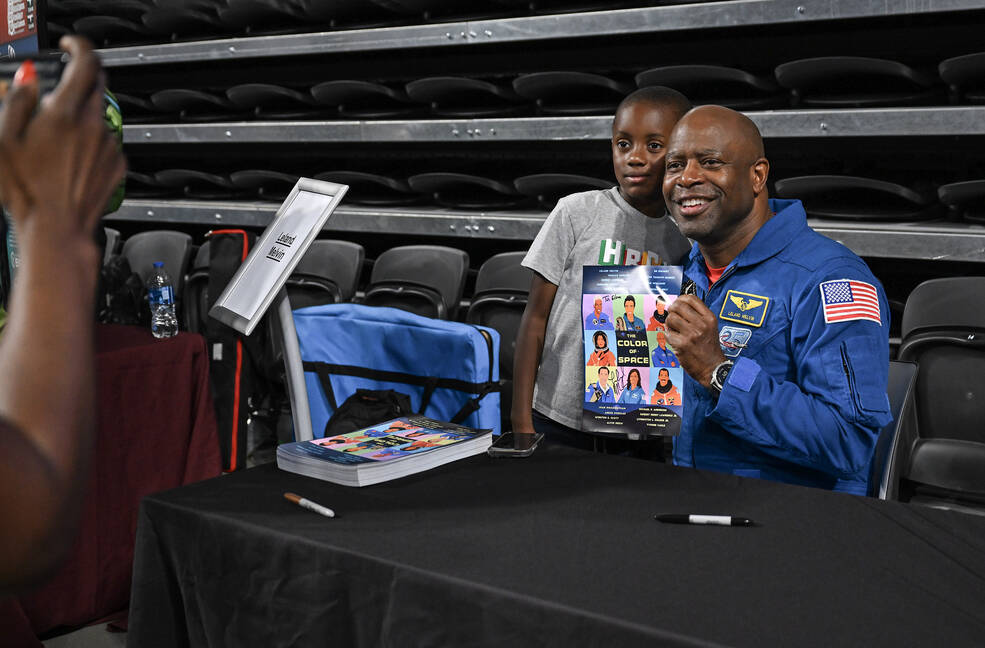
A crowd of more than 100 – including students, alumni, faculty, staff, and community members – attended the screening, held at the Alabama A&M Event Center. A panel discussion followed the 50-minute documentary. Retired NASA astronaut Leland Melvin, who is featured in the documentary, attended and joined in the panel discussion.
“This film serves as a powerful reminder of the progress made and the journey still ahead,” Melvin said. “My sincere hope is that The Color of Space will inspire future generations to never give up on their dreams and to always know that they belong.”
NASA’s Office of STEM Engagement and Office of Communications at the agency’s Marshall Space Flight Center partnered with Alabama A&M on the screening. Several OSTEM engagements took place in coordination with the screening, including recruiting for internships, according to Kevin McGhaw, director of NASA’s Office of STEM Engagement – Southeast Region. McGhaw moderated the panel discussion, which included Melvin, NASA chief historian Brian Odom, and Jori Kates, producer and director of the film for the agency.
“Representation matters and opportunities like this screening reinforce our agency’s ongoing efforts to build a STEM pipeline from the talent pool at HBCUs (Historically Black Colleges and Universities), and other minority serving institutions,” McGhaw said. “Bringing diverse perspectives to NASA is necessary for our space exploration mission’s success.”
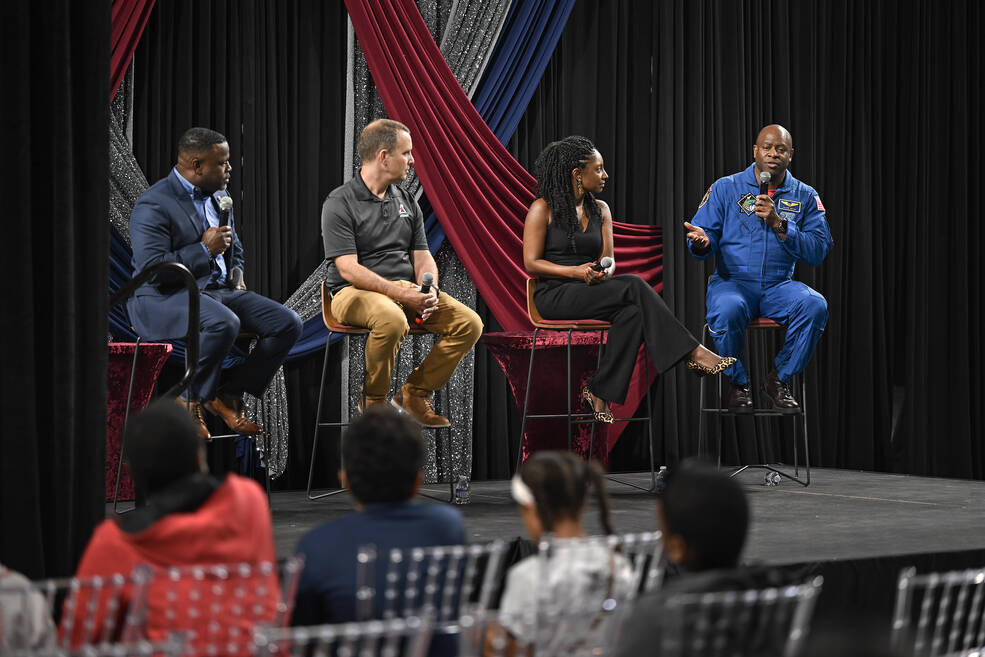
NASA and Club for the Future, a nonprofit founded by Blue Origin, have hosted multiple free in-person viewing events nationwide of the documentary at HBCUs, conferences, festivals, and more.
The documentary highlights a conversation between current NASA astronauts Stephanie Wilson, Victor Glover, Jeanette Epps, as well as retired astronauts Leland Melvin, Bernard Harris, Robert Curbeam, and Bobby Satcher, speaking about their journeys and motivations in a panel hosted by NASA Johnson Space Center Director Vanessa Wyche, the first Black woman to lead a NASA center.
The Color of Space also includes rare archival footage and interviews with Guion ‘Guy’ Bluford, the first Black man in space; Charlie Bolden, retired astronaut and first Black NASA administrator; former astronauts Alvin Drew and Joan Higginbotham; and Ed Dwight, America’s first African-American astronaut candidate.
Kates said she is honored to have been able to help share the incredible journey of NASA’s Black astronauts. “Their passion and commitment to continuing their legacy and inspiring the next generation of explorers and STEM professionals is truly remarkable as they share their experiences, hopes, and dreams, while acknowledging the weight of their roles as Black men and women,” Kates said.
Melvin concluded the event, specifically addressing the college, high school, and elementary students in attendance about their role in continuing what those who came before them started. “We’re all connected to this legacy, and we need to do our part to be along this same journey to greatness and to excellence, whether it’s building tracker beams, or going on the Moon, to Mars, or beyond,” he said.
Odom said it was befitting that the screening took place at Alabama A&M, given the institution’s long relationship with Marshall.
“It’s a relationship that has included many collaborative efforts and contributions in science and engineering,” Odom said. “One important example was the development of the computer science program in the mid-1960s with the support of Marshall’s African American pioneering mathematician, Clyde Foster.”
Smith, a Media Fusion employee and the Marshall Star editor, supports Marshall’s Office of Strategic Analysis & Communications.
The Color of Space captures the personal stories of seven current and former Black astronauts, each selected to become part of NASA’s astronaut corps and train for space missions.Credits: NASA
Intern Contributes ‘Sizably’ to Marshall’s Advanced Propulsion Project
By Wayne Smith
A college student in NASA’s Pathways Internship Program designed, built, and tested a sub-scale rotating detonation rocket engine, a sizable contribution to technology that could fuel future space exploration.
A rotating detonation rocket engine, referred to as RDRE, is an advanced rocket engine design that could significantly change how future propulsion systems are built. The revolutionary RDRE design differs from a traditional liquid rocket engine by generating thrust using a supersonic combustion phenomenon known as a detonation. This design produces more power while using less fuel than today’s propulsion systems and has the potential to power both human landers and interplanetary vehicles to deep space destinations, such as the Moon and Mars.
The technology could also transfer to life on Earth for the benefit of all. In automotive terms, imagine giving the power of a heavy-duty pickup truck to a small four-door sedan while maintaining excellent fuel economy. That’s one of the primary benefits of an RDRE. Such technology in flight vehicles would enable NASA and commercial companies to move more payload and mass to deep space destinations, an essential component to making space exploration more sustainable.
Dalton Luedke, an aerospace engineering student at Georgia Tech, recently completed his internship with the advanced liquid propulsion team at NASA’s Marshall Space Flight Center, where he led the design and testing of the sub-scale engine known as MARLEN (maturation of additive really little engines). Luedke developed a miniature engine you can hold in the palm of your hand, as opposed to a 10,000-pound full-scale engine, simplifying testing timelines.
Luedke’s sub-scale design fueled rapid component development, enabling Marshall engineers to assess how different designs impact combustor performance metrics. MARLEN was designed and tested to achieve the broader NASA goal of assessing how these engines scale with thrust class, according to Tom Teasley, a liquid propulsion engineer at Marshall and program lead. He said the biggest advantage an RDRE offers engineers is the ability to design the chamber and the nozzle into a ring-shaped configuration, dramatically reducing the total length of a combustor.
“For an upper stage engine, we’re talking about a reduction of around 70% in length,” Teasley said.
Teasley and Luedke said the project started as an idea and morphed into something much larger than either of them expected. The smaller engine design, combined with Marshall capabilities, streamlined successful testing of 12 unique RDRE configurations, with cumulative firing time at over a minute in duration.
Teasley called Luedke’s development with the novel technology an incredible accomplishment.
“It is basically unheard of for a student engineer to go and do the development on a combustor all by themselves,” Teasley said. “Much less the fact that he was able to do the development, the post-processing, and then fire it before the completion of his internship.”
Both agree the technology has the potential to revolutionize space travel and brings game-changing options for how engineers design rocket engines.
“To be a part of the group of people doing the initial research that will inevitably inform full-scale future designs that will fly one day is exciting because we are the first people learning this new stuff,” Luedke said.
Teasley said Luedke’s work was ambitious, and the success of the project is driving interest in the technology from industry, government, and academia.
“I think we have maybe three dozen interested parties across the U.S. in the technology,” Teasley said. “I’m personally working with at least a dozen (companies) that are taking the technology to market, they are doing the development in concert with NASA, to make the engine system a reality. It’s an opportunity for everyone to gain that knowledge and experience and retain it within NASA so that all industry can benefit.”
Luedke said he applied to the Pathways Program “on a whim” and was surprised to even get an interview, much less an offer to work with NASA. His Marshall internship was January through August, and he hopes to return to NASA for his career.
“I was hesitant to start working with the combustion device branch initially because I never imagined I would like propulsion engineering,” Luedke said. “I was never particularly good at thermodynamics, so I didn’t think I would be a good propulsion engineer. Now, I cannot imagine myself doing anything else.”
The Pathways Internship Program offers students and recent graduates paid internships that are direct pipelines to full-time employment at NASA upon graduation. Learn more about the program in this brochure.
Smith, a Media Fusion employee and the Marshall Star editor, supports Marshall’s Office of Strategic Analysis & Communications.
Supervisors’ All-Hands Focuses on Marshall Culture, Strategy
Supervisors at NASA’s Marshall Space Flight Center met with Marshall leadership during an all-hands meeting Sept. 11 in Activities Building 4316 to discuss the center’s strategy and culture.
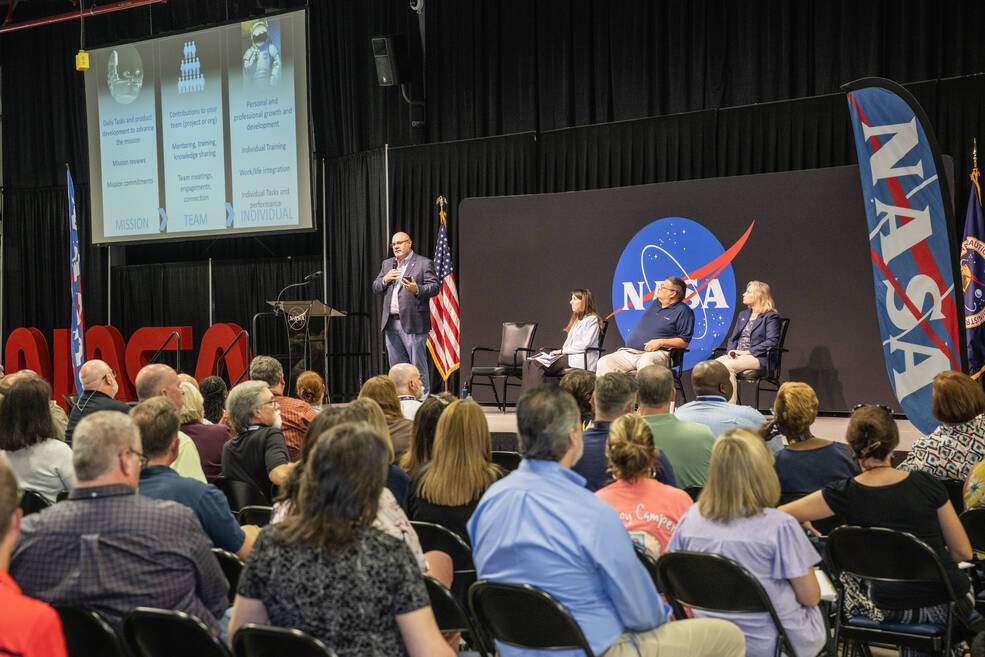
Acting Center Director Joseph Pelfrey was joined on stage by Associate Director Rae Ann Meyer, Associate Director, Technical, Larry Leopard, and Office of Human Resources Director Susan Whitfield for a presentation and a question and answer session that followed.
The meeting for supervisors followed a center wide Aug. 15 all-hands, where leaders discussed the center’s future strategy, culture, and on-site work.
Pelfrey was named acting center director following Jody Singer’s retirement July 29. Marshall team members will honor Singer with a retirement reception Sept. 21.
NASA’s Psyche Mission on Track for Liftoff Next Month
The spacecraft’s solar arrays are folded like an envelope into their stowed position. Xenon gas – fuel for the journey to the asteroid belt – is loaded. All four thrusters have passed their final tests. Engineers have confirmed the massive high-gain antenna is set to transmit data. The software is tested and ready. The science instruments – a multispectral imager, magnetometer, and gamma-ray and neutron spectrometer – that will investigate the asteroid Psyche are poised for action.
NASA’s Psyche spacecraft has less than 30 days to go before the opening of its launch period, which runs from Oct. 5 through Oct. 25. What the mission learns from the metal-rich asteroid may tell us more about how planets form.
“These missions take so many people and so much meticulous, rigorous, personally driven work,” said Lindy Elkins-Tanton, principal investigator for Psyche at Arizona State University. “I am ready to be ecstatic. We all are, but we are not ecstatic yet. Let’s launch and establish communications – then we can scream, jump, and hug each other!”
Within two weeks, technicians will begin encapsulating the spacecraft in its payload fairing – the cone at the top of the rocket – and the spacecraft will move to SpaceX facilities at NASA’s Kennedy Space Center. Psyche is set to launch atop a SpaceX Falcon Heavy from the center’s Launch Complex 39A at 9:38 a.m. CDT on Oct. 5.
“It’s getting increasingly real,” said Henry Stone, Psyche’s project manager at NASA’s JPL (Jet Propulsion Laboratory). “We are counting the days. The team is more than ready to send this spacecraft off on its journey, and it’s very exciting.”
After escaping Earth’s gravity, Psyche will use solar electric propulsion to accomplish its six-year journey to the asteroid. The efficient propulsion system works by accelerating and expelling charged atoms, or ions, of the neutral gas xenon – creating a thrust that gently propels the spacecraft with a force akin to what you’d feel holding a single AA battery in your hand. Technicians recently loaded 2,392 pounds of xenon onto the spacecraft over the course of about two weeks.
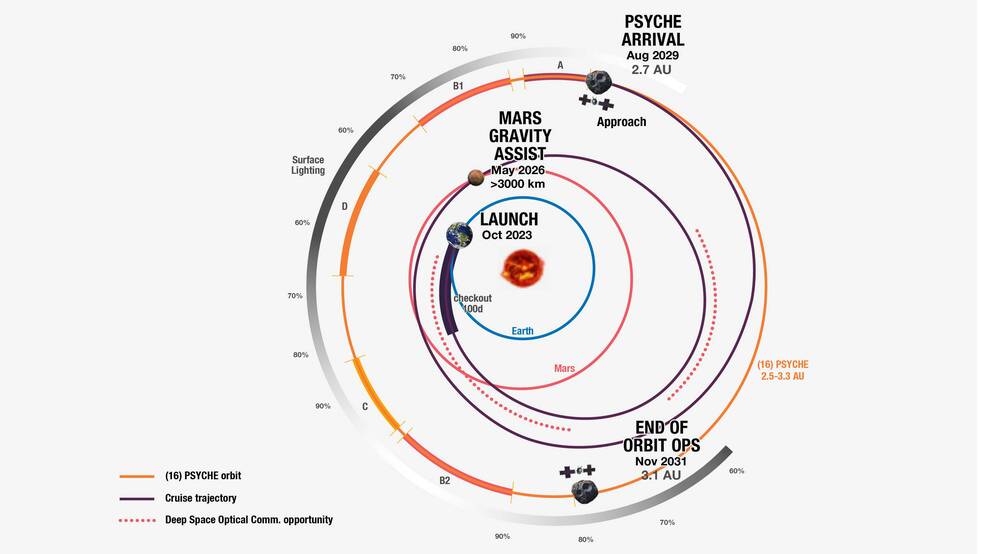
Measuring roughly 173 miles at its widest point, the asteroid Psyche presents a unique opportunity to explore a metal-rich body that may be part of a core of a planetesimal, the building block of an early planet. Once the spacecraft reaches Psyche in the main asteroid belt between Mars and Jupiter, it will spend about 26 months orbiting the asteroid, gathering images and other data that will tell scientists more about its history and what it is made of.
Arizona State University leads the Psyche mission. A division of Caltech in Pasadena, JPL is responsible for the mission’s overall management, system engineering, integration and test, and mission operations. Maxar Technologies in Palo Alto, California, provided the high-power solar electric propulsion spacecraft chassis.
A technology demonstration called DSOC (Deep Space Optical Communications) will fly on Psyche in order to test high-data-rate laser communications that could be used by future NASA missions. JPL manages DSOC for the Technology Demonstration Missions program within NASA’s Space Technology Mission Directorate and the Space Communications and Navigation program within the Space Operations Mission Directorate.
Psyche is the 14th mission selected as part of NASA’s Discovery Program, managed by the agency’s Marshall Space Flight Center. NASA’s Launch Services Program, based at Kennedy, is managing the launch service.
As We Welcome Fall, Take Time to Manage Stress
Dear Marshall family,
I can’t believe the Labor Day holiday has already come and gone! Fall is rapidly approaching, so please plan to take some time off and enjoy the cooler temperatures and natural beauty that welcomes us to this time of the year.
There are many topics I considered focusing on in this letter. Given all that’s going on around us, however, I think it’s a good time to talk very briefly about stress. We often think that we’re dealing very well with our stress and sometimes we are. At other times, though, it can seem that our burden of stress increases faster than our ability to deal with, or manage it, and so it can begin to feel a little overwhelming.
For many of you, the end of the fiscal year brings additional workload stress, and for others, the workload stress is high for other reasons. For some, challenging interpersonal dynamics or dynamics between teams add significantly to the overall level of stress at work. Then we add the stress of things happening in our personal lives, such as children going away to college or moving away for jobs, troubled relationships, financial decisions and struggles, or health concerns, just to name a few. And beyond all that, there are things happening around us that also add to our stress, such as natural disasters, episodes of mass violence, political extremism, and economic challenges. It can add up quickly.
If you are struggling with an overwhelming workload, or with dysfunctional team dynamics, please talk with your leadership team about those issues and join with your leadership in trying to find ways to make things better. Don’t suffer in silence, because doing so almost ensures that nothing will be done to improve the situation. Also, please show others a little extra grace. It’s safe to assume everyone is dealing with something, and a smile or a kind word can go a long way in making someone’s day a little better.
When thinking about stress, it’s important to pause and consider where our stress is coming from. Until we do, we’re poorly prepared to do anything about it. Once we know the sources, twe can work to reduce the stress where we can and take steps to better manage it in those situations we cannot change. Recognizing what we can and cannot control is another key element of managing our stress. It’s important to try to keep our attention and other resources focused on what we can control or at least influence, whenever possible. Worrying and stressing over things we cannot control gives us nothing in return – at least nothing good in return.
In many ways, being able to tolerate and manage stress is about fostering our overall health and well-being. Sadly, in many cases, as we become more stressed, we tend to stop doing the things that are important to our well-being. We sacrifice those things in efforts to devote more time to solving the problems, but in so doing, we sometimes actually undermine our ability to solve the problems – we make it more difficult to succeed. So, I’ll offer just a few tips for being deliberate in fostering our health and well-being.
- Get enough sleep and rest. I know, this is really hard to do because we think that we have to sacrifice it in order to have more time to work on the problem. But without adequate sleep and rest, we cannot function at peak performance, and as a result, we often require more time to solve the problem.
- Stay engaged with family and friends. We are social creatures with hardwired needs for social interaction. Of course, it’s true that some of us need more, or less, social interaction, but we do all need social connections.
- Enjoy nature. Being out in nature and enjoying the wonder and beauty that surrounds us helps us to feel calmer, and better, in the general sense.
- Enjoy hobbies that draw our mind away from our stressors and other worries, allowing for a respite for both our overworked mind and body.
- Allow some time each day for physical activity. It doesn’t need to be strenuous. Simply going for a walk can help clear our mind and get our muscles moving.
- Guided relaxation, meditation, prayer, and/or yoga can help increase our mindfulness and decrease our stress.
- Reading fiction is a great way to take a break from the stresses of life.
- Helping others is a great way to get a better perspective on our problems, and it feels good, too.
I’ll close with a few quick requests. Please be mindful of your stress. Please be deliberate in taking good care of yourself. Be kind. Show some grace. Be the kind of person that you would enjoy being around.
Be safe and well.
Dr. Terry Sterry Licensed psychologist and Marshall Employee Assistance Program coordinator
The Employee Assistance Program (EAP) is available to assist Marshall team members with challenges, or to simply facilitate discussions related to mental health and well-being. For more information, team members can visit the Employee Assistance Program page on Inside Marshall.
Hubble Sees Glittering Globular Cluster Embedded Inside Milky Way
A colorful image of the globular star cluster Terzan 12 is a spectacular example of how dust in space affects starlight coming from background objects.
A globular star cluster is a conglomeration of stars, arranged in a spheroidal shape. Stars in globular clusters are bound together by gravity, with a higher concentration of stars towards the center. The Milky Way has about 150 ancient globular clusters at its outskirts. These clusters orbit around the galactic center, but far above and below the pancake-flat plane of our galaxy, like bees buzzing around a hive.
The location of this globular cluster, deep in the Milky Way in the constellation Sagittarius, means that it is shrouded in gas and dust which absorb and alter the starlight emanating from Terzan 12. The cluster is about 15,000 light-years from Earth. This location leaves a lot of room for intervening interstellar dust particles between us and the cluster to scatter blue light, causing only the redder wavelengths to come through to Earth. The interstellar dust clouds are mottled so that different parts of the cluster look redder than other parts along our line of sight.
The brightest red stars in the photo are bloated, aging giants, many times larger than our Sun. They lie between Earth and the cluster. Only a few may actually be members of the cluster. The very brightest hot, blue stars are also along the line of sight and not inside the cluster, which only contains aging stars.
Terzan 12 is one of 11 globular clusters discovered by the Turkish-Armenian astronomer Agop Terzan approximately a half-century ago. With its sharp vision, Hubble has revolutionized the study of globular clusters ever since its launch in 1990. Hubble observations have shed light on the relation between age and composition in the Milky Way galaxy’s innermost globular clusters.
The Hubble Space Telescope is a project of international cooperation between NASA and ESA. NASA’s Goddard Space Flight Center in Greenbelt, Maryland, manages the telescope. The Space Telescope Science Institute (STScI) in Baltimore, Maryland, conducts Hubble science operations. STScI is operated for NASA by the Association of Universities for Research in Astronomy, in Washington, D.C.
NASA’s Marshall Space Flight Center was the lead field center for the design, development, and construction of the space telescope.
Lucy Spacecraft Captures its First Images of Asteroid Dinkinesh
A small dot moving against the background of stars is the first view from NASA’s Lucy spacecraft of the main belt asteroid Dinkinesh, the first of 10 asteroids that the spacecraft will visit on its 12-year voyage of discovery. Lucy captured these two images on Sept. 2 and 5. On the left, the image blinks between these first two images of Dinkinesh. On the right, the asteroid is circled to aid the eye.
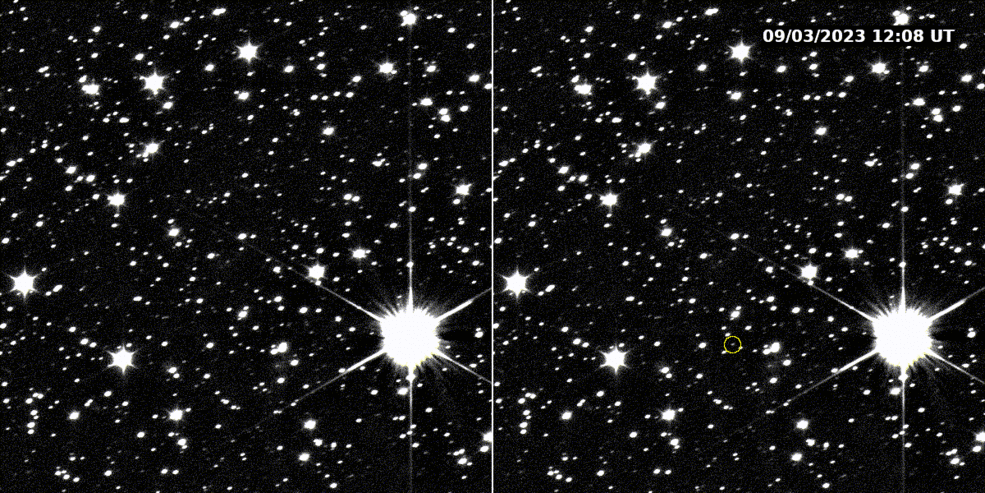
Lucy took these images while it was 14 million miles away from the asteroid, which is only about a half-mile wide. Over the next two months, Lucy will continue toward Dinkinesh until its closest approach of 265 miles on Nov. 1. The Lucy team will use this encounter as an opportunity to test out spacecraft systems and procedures, focusing on the spacecraft’s terminal tracking system, designed to keep the asteroid within the instruments’ fields of view as the spacecraft flies by at 10,000 mph. Lucy will continue to image the asteroid over the next months as part of its optical navigation program, which uses the asteroid’s apparent position against the star background to determine the relative position of Lucy and Dinkinesh to ensure an accurate flyby. Dinkinesh will remain an unresolved point of light during the long approach and won’t start to show surface detail until the day of the encounter.
The brightest star in this field of view is HD 34258, a 7.6 magnitude star in the constellation Auriga that is too dim to be seen by the naked eye from Earth. At this distance, Dinkinesh is only 19 magnitude, about 150,000 times fainter than that star. Celestial north is to the right of the frame, which is about 74,500 miles across. The observations were made by Lucy’s high-resolution camera, the L’LORRI instrument – short for Lucy LOng Range Reconnaissance Imager – provided by the Johns Hopkins Applied Physics Laboratory in Laurel, Maryland.
Lucy’s principal investigator, Hal Levison, is based out of the Boulder, Colorado, branch of Southwest Research Institute, headquartered in San Antonio, Texas. NASA’s Goddard Space Flight Center provides overall mission management, systems engineering, and safety and mission assurance. Lockheed Martin Space in Littleton, Colorado, built the spacecraft. Lucy is the 13th mission in NASA’s Discovery Program. NASA’s Marshall Space Flight Center manages the Discovery Program for the Science Mission Directorate at NASA Headquarters.




























